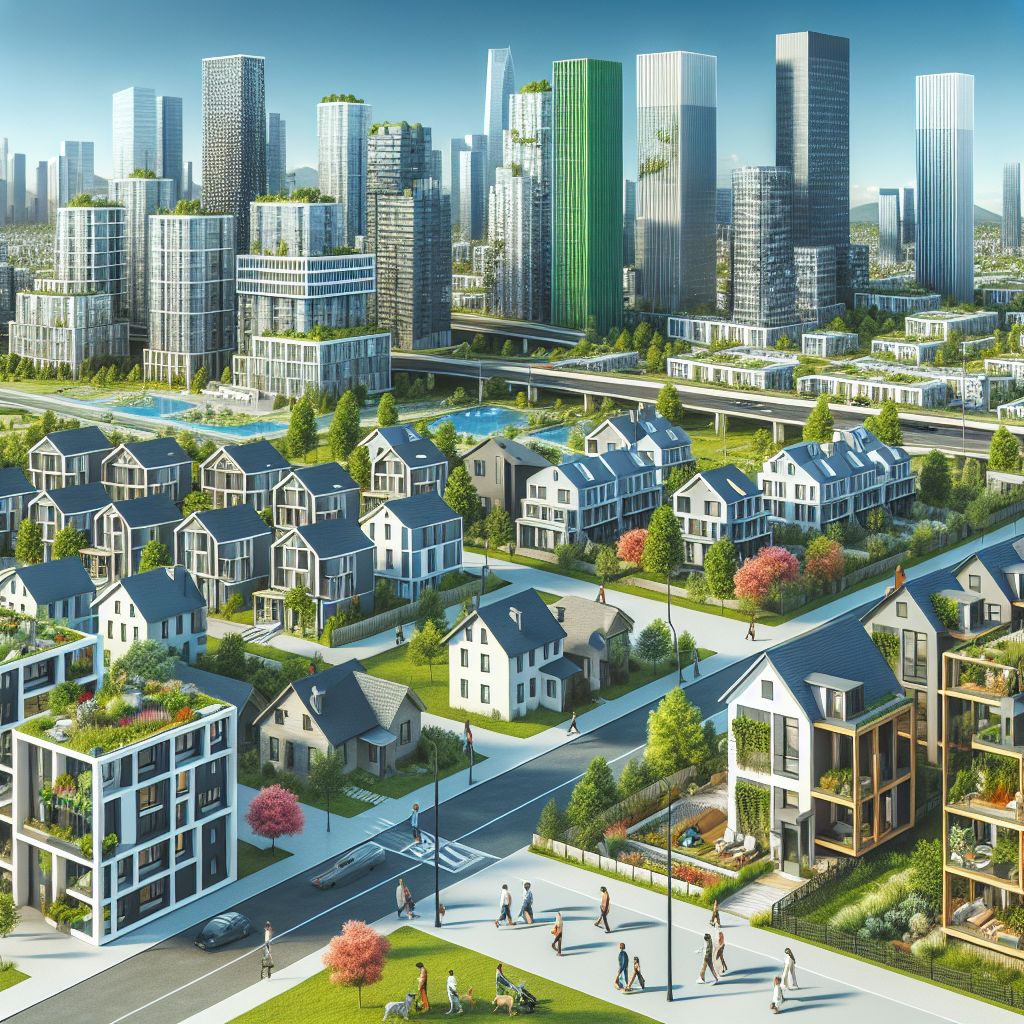EIB and IHS Drive Green Affordable Housing Revolution in Kenya, Targeting 4,000 Energy-Efficient Homes by 2030
The EIB supports affordable housing globally by providing direct loans, engaging with social-housing providers, and—crucially—working through specialized equity funds.

- Country:
- Kenya
Kenya is witnessing a transformative shift in its urban housing landscape as the European Investment Bank (EIB) and IHS Group intensify efforts to bridge the affordable housing gap through climate-resilient construction. The EIB’s development arm, EIB Global, has injected €21.5 million in equity financing into the pioneering IHS Kenya Green Housing Fund—a vehicle now at the heart of a new model for accessible, sustainable housing in East Africa.
Strategic Partnership to Tackle Urban Housing Crisis
This financing forms part of the Fund’s €83.4 million in commitments from both African and international investors, reflecting the project’s cross-continental appeal and shared urgency to address Kenya’s daunting housing shortfall. According to the latest Kenya Population and Housing Census (KPHC), over 7 million out of 12 million Kenyan households reside in urban areas—yet the vast majority remain locked in informal settlements without access to decent, secure homes.
Addressing these realities, IHS Kenya is currently delivering three major projects in Nairobi’s Tilisi, Garden City, and Mashiara Park districts. These developments, collectively accounting for 664 residential units, form the first phase of the Fund’s broader pipeline, which includes 10 additional projects and more than 2,600 new homes planned across Nairobi and the neighboring Kiambu County.
Progress in the Heart of Nairobi: Muzi Stawi Project Nears Completion
The flagship Muzi Stawi development in Nairobi’s Garden City Precinct is now approaching the finish line, with 90% of construction complete. Scheduled for handover in October 2025, the complex features over 200 modern apartments—spanning both one- and two-bedroom units—geared towards low- and middle-income families.
The Muzi Stawi project was showcased at the inaugural IHS Kenya Affordable Housing Conference in Nairobi, where sector leaders, policymakers, and international financiers gathered to review progress and chart the future of green, inclusive urbanization.
Beyond Bricks and Mortar: A Green, Inclusive Vision
What sets the IHS Kenya Green Housing Fund apart is its unwavering commitment to both affordability and sustainability. All developments under the Fund are green-certified, with a sharp focus on energy efficiency, water conservation, and reduced environmental impact—features rarely available to Kenya’s low-income urban dwellers.
Kioi Wambaa, Managing Director of IHS Kenya, underlined the project’s ambition:
“We are on track to deliver about 4,000 quality, affordable green homes by 2030. Projects we undertake are not just developments; they are a promise to the Kenyan market that affordability and excellence can go hand in hand. EIB Global’s investment with IHS Kenya aligns with our goals to address the critical need for affordable housing in Kenya. Garden City is an address that embodies modern living, and we are proud to make it accessible to more Kenyans.”
European Investment Bank: Financial Muscle and Technical Expertise
The EIB’s engagement in Kenya’s housing sector goes beyond capital. As Edward Claessen, Head of the EIB Regional Hub for Eastern Africa, explained:
“With housing costs rising, we are working with experts, planners and policymakers to improve living conditions, reduce energy costs and support climate-friendly urban growth. At EIB Global, we combine both financing with non-financial contribution in the form of technical assistance and advisory services to implement projects with local partners like IHS.”
The EIB supports affordable housing globally by providing direct loans, engaging with social-housing providers, and—crucially—working through specialized equity funds. Its core goal: to foster social cohesion and elevate living standards for populations left behind by traditional market dynamics.
The Broader Impact: Climate Action, Policy Reform, and Social Upliftment
Kenya’s affordable housing drive carries far-reaching climate benefits. The United Nations Environmental Programme (UNEP) estimates that the real estate sector accounts for 30% of global greenhouse gas emissions. By promoting green building standards—energy efficiency, water-saving designs, and sustainable materials—the IHS Fund is aligning with the EIB’s mission as the world’s leading climate bank.
Yet the social impact is equally crucial. Despite government focus, only 2% of new formal housing in Kenya is affordable to low-income families, according to a 2021 report by the Kenya Institute for Public Policy Research and Analysis (KIPPRA). By prioritizing rentals and purchases for lower- and middle-income households, the IHS Kenya Green Housing Fund is setting a new precedent for inclusivity.
Looking Ahead: A Blueprint for African Cities
With over 2,600 additional units in the pipeline and an ambitious 4,000-home target for 2030, the EIB-IHS partnership is establishing a scalable model for sustainable urbanization across the continent. The initiative demonstrates that green, affordable housing can be delivered at scale, blending financial innovation, policy support, and technical excellence.
As Kenya’s cities continue to swell, initiatives like the IHS Kenya Green Housing Fund signal hope for a new urban future—one where climate action, affordability, and quality living standards go hand in hand.
- READ MORE ON:
- Kenya affordable housing
- EIB Global
- IHS Kenya Green Housing Fund
- green building
- urban development
- climate action
- social housing
- Garden City Muzi Stawi
- energy-efficient homes
- Nairobi housing
- Kiambu projects
- UNEP
- sustainable cities
- Africa urbanization
- equity financing
- Kioi Wambaa
- Edward Claessen










